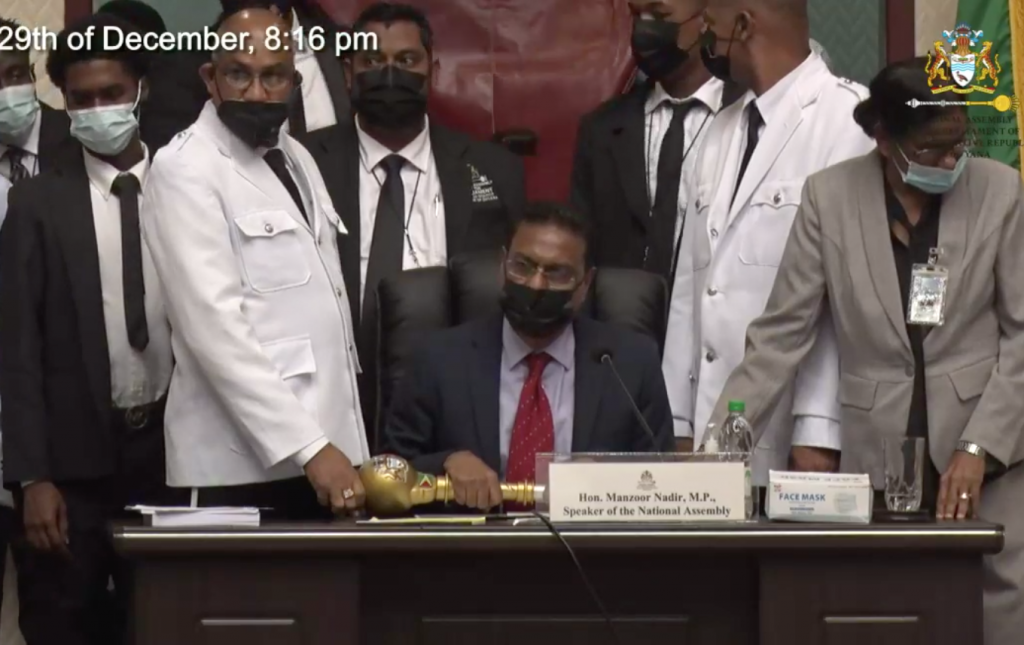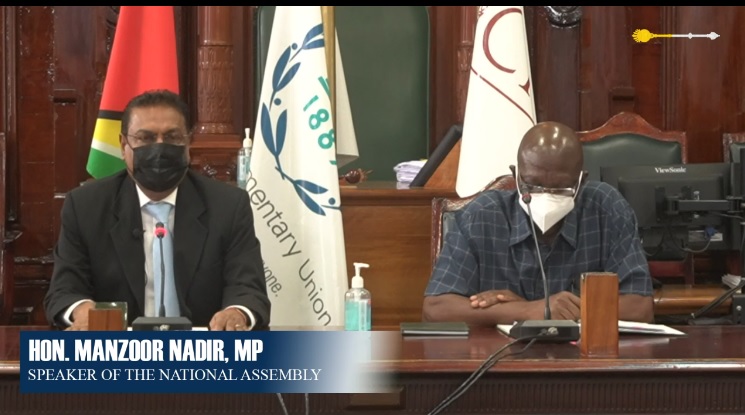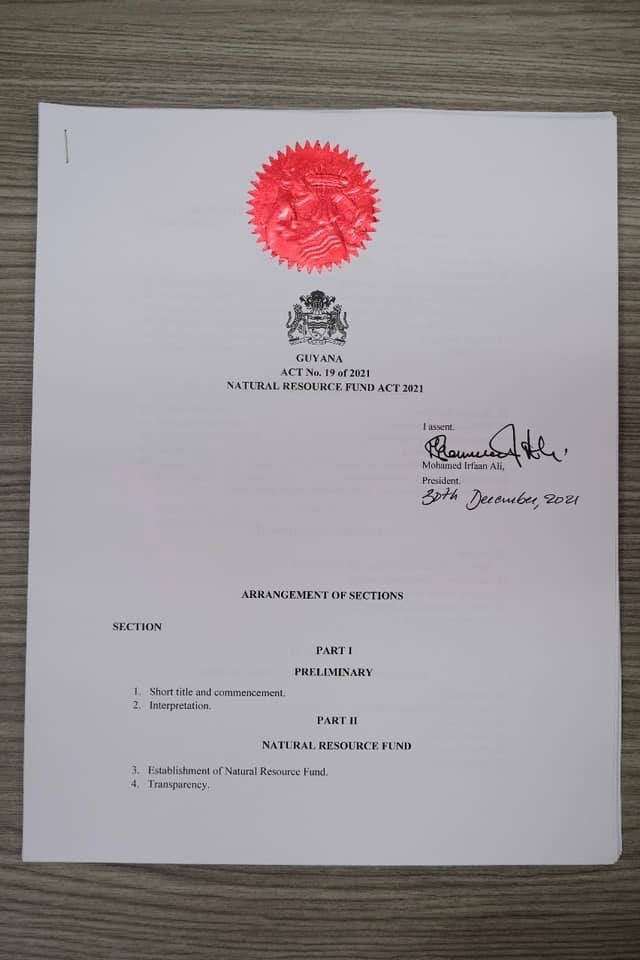The Mace

In ancient times, a Mace was a weapon of defence. A Mace is now a ceremonial symbol of authority and is used in Commonwealth Parliaments. In Guyana, a Mace was used for the first time on 10th September, 1957. It was made of silver gilt.
When Guyana became a Republic on 23rd February, 1970, the head of the Mace, which depicted British Royal Arms, was replaced with Guyana's Coat of Arms. The head of the present mace was designed by the Ministry of Information and Culture. The original stem, which is one hundred and forty-five and a half centimeters in length, depicts a Victoria Regia Lily, one of the largest water lilies in the world, first discovered in British Guiana during the reign of Queen Victoria. The stem also includes representation of a rice plant in full bearing and a sugar cane in blossom, representing two of Guyana's principal products.
On entering and leaving the Parliament Chamber, the Speaker is preceded by the Sergeant-at-Arms bearing the Mace on his right shoulder. When the National Assembly is in session, the Mace is placed on the Clerk's table, with its head pointing towards the Government side of the Chamber. When the Assembly meets as a Committee of the Whole Assembly, the Mace is placed below the Clerk's table.
When the Mace lies upon the table, the House is in session;
When under, it is a Committee;
When out of the House, no business can be done;
When from the Table and upon the Sergeant's shoulder, the Speaker alone manages.




 GCCI President Timothy Tucker
GCCI President Timothy Tucker Speaker of the National Assembly Manzoor Nadir and Clerk Sherlock Isaacs during a press conference
Speaker of the National Assembly Manzoor Nadir and Clerk Sherlock Isaacs during a press conference A snippet from the live broadcast showing that the pace was in its rightful place at the time of the voting on the NRF Bill
A snippet from the live broadcast showing that the pace was in its rightful place at the time of the voting on the NRF Bill


